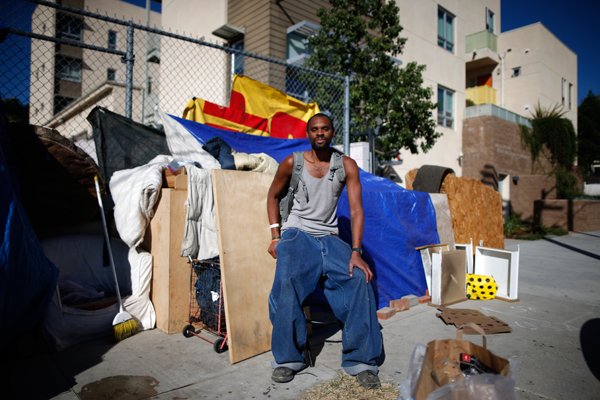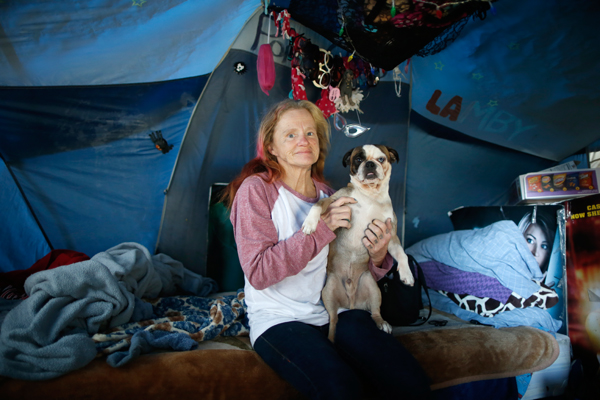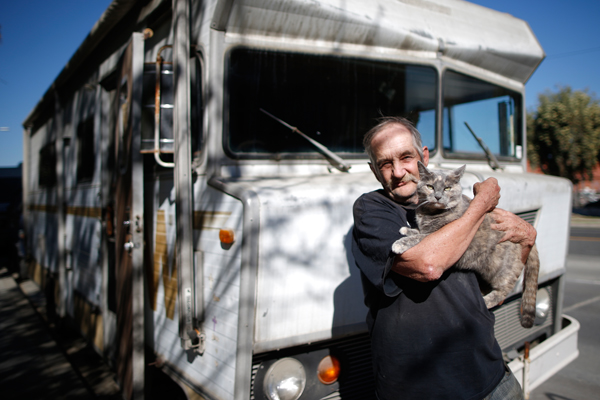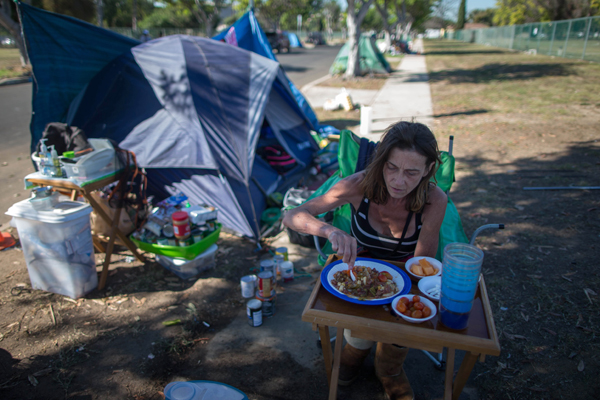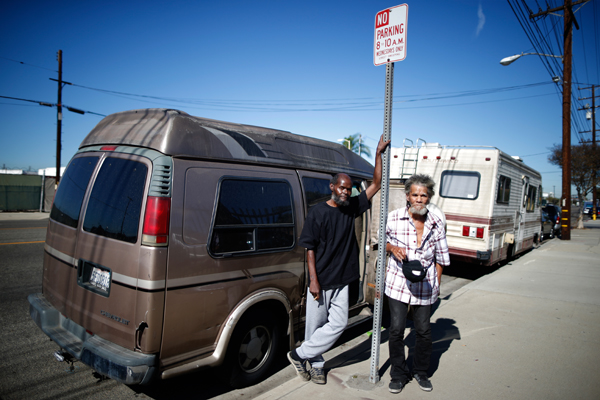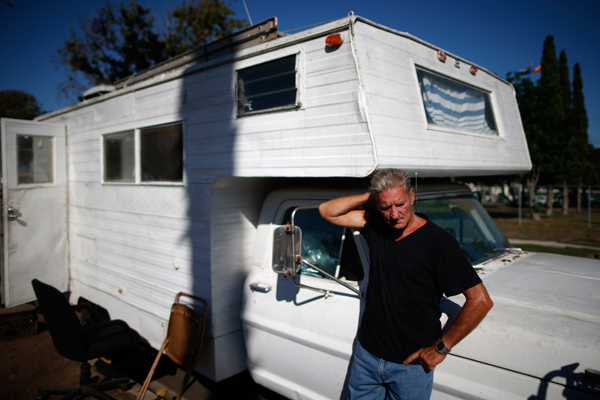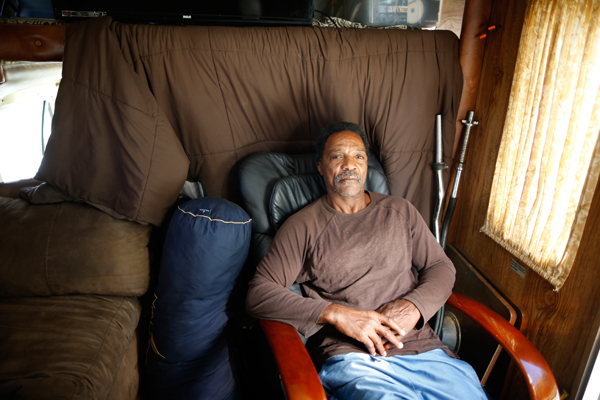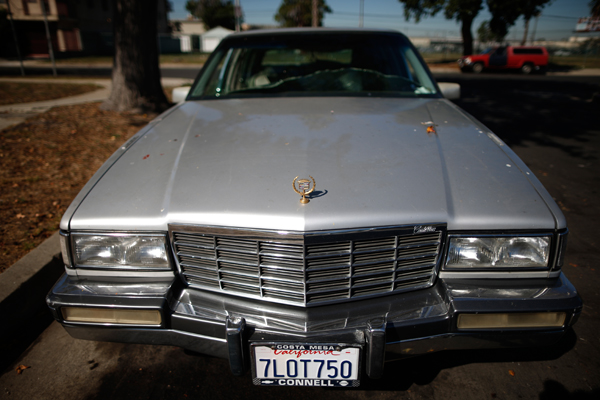Life on the Streets of L.A.
By Lucy Nicholson
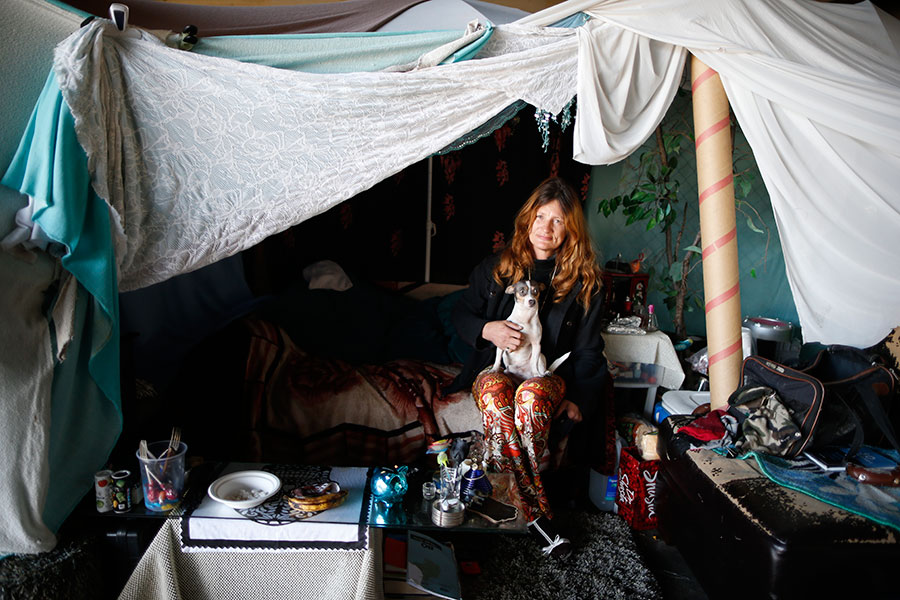
Karen Souza, 55, has been homeless for a decade. She originally became homeless after her spouse was arrested. “My whole world crumbled, my teenagers ran out of control and it just got bad.”
Karen now lives in a tent under a freeway on a street in L.A. with her dog Handsome.
As Los Angeles grapples with a huge homelessness problem, El Nino weather patterns are likely to bring torrential downpours in coming months and add to the misery of the thousands of people who sleep on the city’s streets.
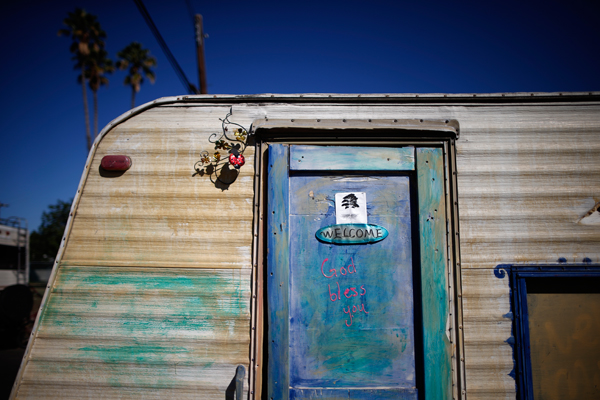
Los Angeles’ homeless population is estimated at about 44,000, with many of them concentrated in a bleak and chaotic square-mile patch of downtown known as Skid Row.
The others can be seen across the sprawling metropolis of some 10 million people, sheltering under highway overpasses and on vacant lots in ragged tent encampments, and in cars and campers lining streets.
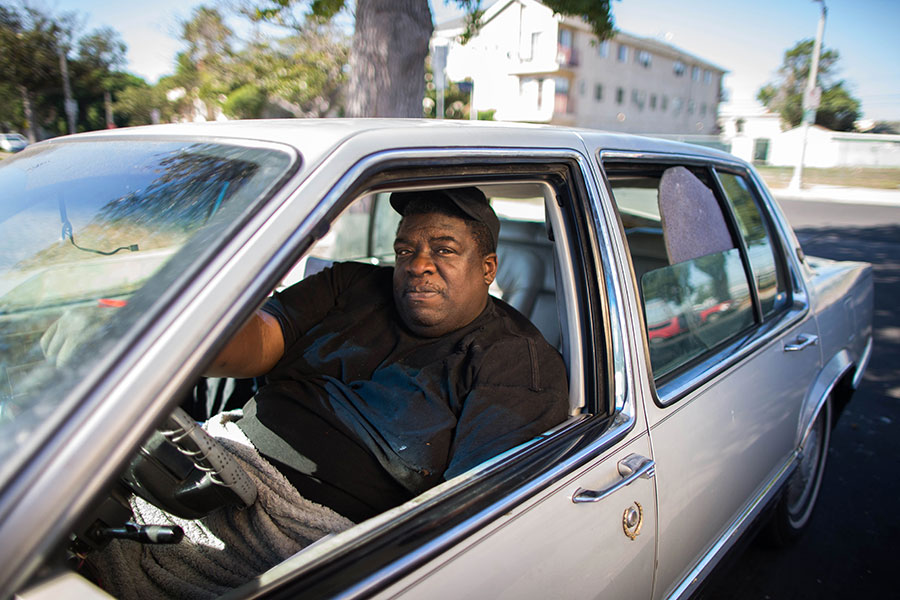
Victor Augustine, 53, has been homeless for two years and sleeps in his Cadillac car at a homeless motorhome and tent encampment near LAX airport. Victor recently found work as a part-time security guard.
The number of makeshift tents and vehicles used by the homeless has shot up by 85 percent in just the last two years to 9,535, according to the Los Angeles Homeless Services Authority, an independent agency set up by the city and the county.
Mayor Eric Garcetti proposed in September spending $100 million to combat the problem. But he stopped short of declaring a state of emergency that would lift barriers to housing people, or calling on the governor and federal government for funding.
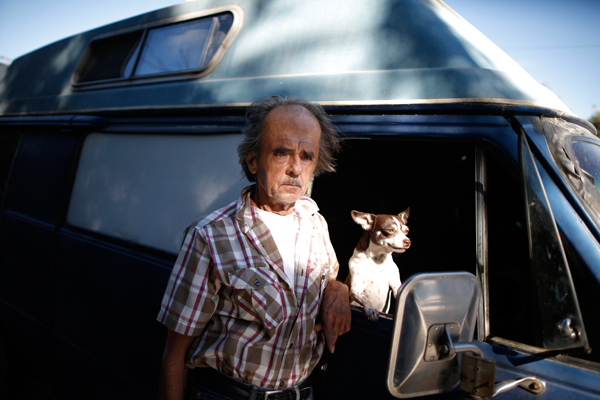
Last month, the city council gave initial approval to a plan to shelter the homeless in public buildings and to allow people living in cars to stay overnight in designated parking lots.
But many homeless are reluctant to leave possessions and pets on the streets in exchange for a short night of shelter.
The health and meagre belongings of the homeless will be even more at risk when the expected rainstorms begin, advocates say.
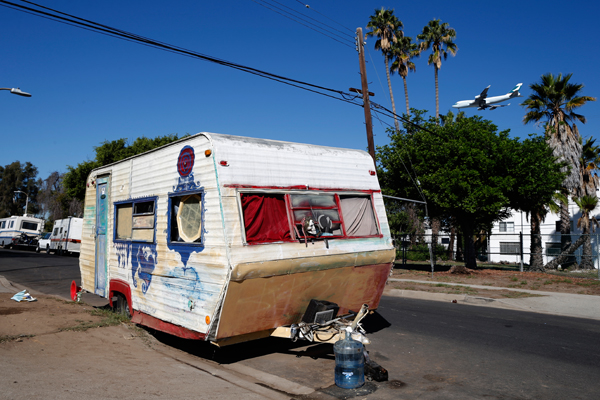
Gary Blasi, professor of law emeritus at UCLA, wrote in a Los Angeles Times op-ed article last month that many homeless people could die if a state of emergency is not declared that could ensure some short-term housing solutions.
The homeless desperately need pallets to raise their tents off the sidewalks, he wrote, as well as heavy-duty tarpaulins, toilets, trash collection, and portable showers.
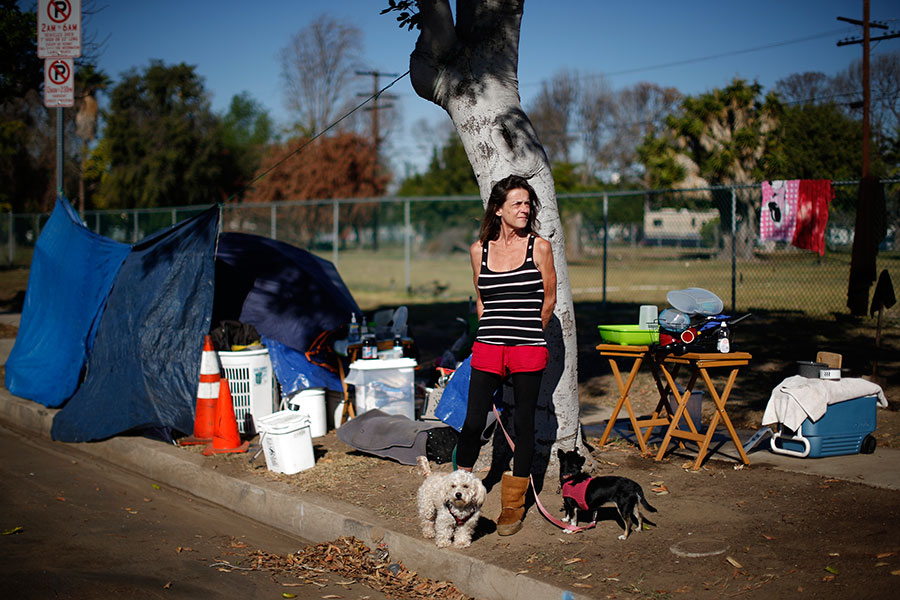
Stacie McDonough, 51, poses for a portrait by her tent in a homeless RV and tent encampment near LAX airport in Los Angeles, California, United States, October 26, 2015. McDonough is an army veteran with a college degree who has been homeless for almost 2 weeks.
Blasi also called for the repeal of a ruling that makes it a crime for homeless people in Los Angeles to refuse to break down tents on sidewalks during the day.
Even as American cities grapple with a chronic shortage of affordable housing, as well as budget constraints on social programs, many municipalities across the United States have also been clamping down on homeless encampments.
Los Angeles residents pay a higher percentage of their income in rent than any other U.S. city, according to a UCLA study last year.
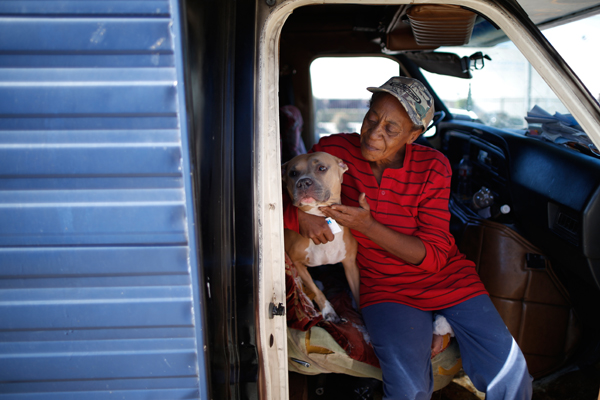
Pamela Polk, 56, became homeless a few months ago when she was evicted from her apartment. She had to borrow money from a friend to buy a motorhome.
“It’s horrible living here. Matter of fact, I’m sick of this. I can cook but it’s not like being in your place. I can’t take a bath. I have to go places to take a bath,” she said.
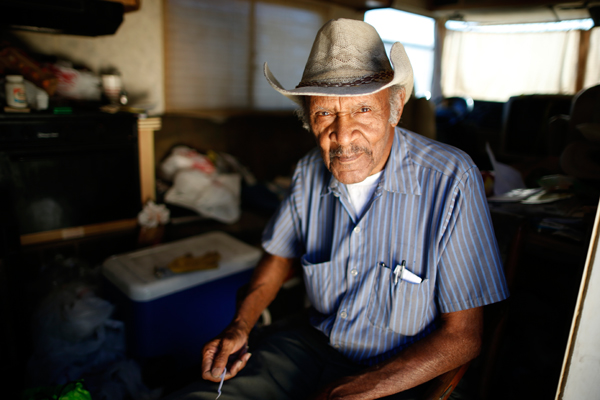
“I just have to wash off best I can,” Cole said. “Very difficult.”
